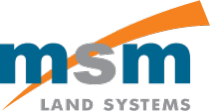Asia Pacific Robotic Welding Cell Markets, 2022-2028 - Implementation of Collaborative Robots to Bridge Skill Gaps Gaining Momentum - ResearchAndMarkets.com
The "Asia Pacific Robotic Welding Cell Market Forecast to 2028 - COVID-19 Impact and Regional Analysis - by Offering, Cell Type, and End-user Industry" report has been added to ResearchAndMarkets.com's offering.
The robotic welding cell market in Asia Pacific is expected to grow from US$ 855.93 million in 2022 to US$ 268.75 million by 2028. It is estimated to grow at a CAGR of 8.5% from 2022 to 2028.
Collaborative robots or cobots are designed to safely work alongside humans in tedious, dull, and hazardous environments. Unlike traditional industrial robots working in fenced facilities to avoid proximity with humans, cobots operate in a shared workspace alongside human labor. Conventional industrial robots have long allowed manufacturers to take advantage of automation and compensate for labor shortages, but they are often designed to perform a specific task.
Furthermore, they lack cognitive capabilities due to which humans need to reprogram their operations based on new circumstances. In contrast, cobots do not require heavy, pre-programmed actuators to drive them. Cobots' movements are directed by computer-controlled operators, such as robotic arms, which humans monitor.
Thus, cobots facilitate effective human-machine collaboration in the workplace. Cobots can be programmed to perform a wide range of tasks in a factory setting, such as handling materials, assembling items, palletizing, packaging, labeling, inspecting product quality, welding, press-fitting, driving screws and nuts, and tending machines.
While cobots attend these mind-numbing tasks, human workers can focus on tasks that require skills and reasoning. These all advantages of cobots will propel the growth of the robotic welding cell market during the forecast period.
Market Overview
The robotic welding cell market in Asia Pacific is segmented into China, India, Japan, Australia, South Korea, and the Rest of APAC. Robotics technology is increasingly being adopted in the Asia Pacific due to the growing need to automate processes, improve efficiency and productivity, and reduce human errors.
Various automotive, healthcare, defense, and aerospace industries adopted robotics technology for process automation and efficient resource management. Industrial robots are mainly used in Asia Pacific because of the dominant automotive industry and low-cost manufacturing units.
The rising aging population in this region also drives the demand for service robots in countries such as China and Japan. Increased application of robots in diverse industries, including entertainment, education, and healthcare, further supplements the growth of this market.
The factors limiting the market's growth include high initial investment and stringent safety regulations. Advancements in technologies, including swarm robotics, cloud robotics, and bio-mimetics, would provide numerous growth opportunities in the market in the region.
Asia Pacific Robotic welding Cell Market Segmentation
- Based on offering, the market is segmented into solution and services. The solution segment registered the largest market share in 2022.
- Based on cell type, the market is categorized into pre-engineered cells and custom cells. The pre-engineering segment held the largest market share in 2022.
- Based on end user, the Asia Pacific robotic welding cell market is segmented into automotive, manufacturing, and aerospace and defense. The manufacturing segment held the largest market share in 2022.
- Based on country, the market is segmented into Australia, China, India, Japan, South Korea, and Rest of APAC. China dominated the market share in 2022. ABB Ltd; The Lincoln Electric Company; Kuka AG; Kawasaki Heavy Industries, Ltd.; Zeman Bauelemente Produktionsgesellschaft mbH; and Phoenix Industrial Solutions are the leading companies operating in the robotic welding cell market in the region.
Key Industry Dynamics
Market Drivers
- Boosting Uptake of Industry 4.0 Principles
- Uplifting Adoption of Welding Robots in Automotive Industries
Market Restraints
- Fear of Job Loss Among Workforce due to Automation
Market Opportunities
- Surge in Demand for Laser and Plasma Welding Technologies
Future Trends
- Implementation of Collaborative Robots to Bridge Skill Gaps
Company Profiles
- ABB Ltd
- The Lincoln Electric Company
- Kuka Ag
- Kawasaki Heavy Industries, Ltd.
- WEC Group Ltd
- Phoenix Industrial Solutions
For more information about this report visit https://www.researchandmarkets.com/r/lh4pk8
About ResearchAndMarkets.com
ResearchAndMarkets.com is the world's leading source for international market research reports and market data. We provide you with the latest data on international and regional markets, key industries, the top companies, new products and the latest trends.
View source version on businesswire.com: https://www.businesswire.com/news/home/20230123005631/en/



